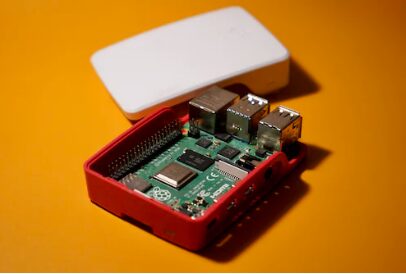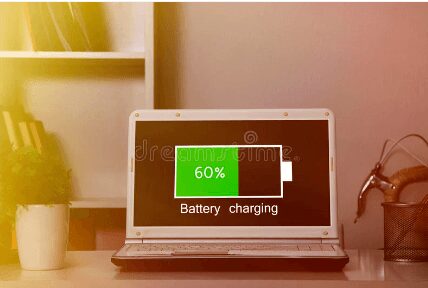Why don’t laptops have hdmi input? Best Guide 2023

Why don’t laptops have HDMI input?
HDMI stands for High-Definition Multimedia Interface, a digital connection that allows users to send high-definition video and audio signals to display devices. This technology was designed to replace the analog video and audio cables commonly used to connect computer monitors and televisions to computers. HDMI is a digital signal that uses a single line to transmit audio and video signals, so you won’t have to worry about the audio and video cables interfering.

Why don’t laptops have hdmi input?
The high-definition multimedia interface (HDMI) is a standard for transmitting audio and video signals between devices, and it’s widely used in televisions, gaming consoles, set-top boxes, and other consumer electronics. However, one device that doesn’t come with an HDMI input is the laptop. Despite being versatile and powerful computing devices, laptops often need an HDMI input, making it difficult to use them as a display for other devices.
Why is HDMI Input Important?
HDMI input allows a device to receive video and audio signals from another source, such as a cable box, a Blu-Ray player, or a gaming console. This makes it possible to use the device as a display for movies, games, and other content. In the case of laptops, HDMI input would allow users to connect their laptops to a television or monitor to use it as a display. This is especially useful for users who want to work on large displays or present their work to a group.
Why can’t i download disney plus on my laptop? Best Solution 2023 (laptopsjet.com)
Laptops vs Desktops
One of the main reasons why laptops lack HDMI input is the difference between laptops and desktops. Desktops are designed to be used as a primary computer and are often used for gaming, video editing, and other tasks requiring much processing power. As a result, desktops often come with multiple HDMI inputs, allowing users to connect multiple devices simultaneously.
On the other hand, laptops are designed to be portable and compact. They are typically used for work, school, and entertainment on the go. Because of this, laptops are built with a smaller form factor and are more limited in terms of connectivity options. In most cases, laptops only come with one or two HDMI outputs, which connect the computer to an external display.
Cost Considerations
Another reason why laptops don’t have HDMI input is cost. Adding an HDMI input to a computer would require additional hardware, which would increase the cost of the device. This is especially true for laptops designed for budget-conscious consumers, as manufacturers try to keep the cost of these devices as low as possible.
In addition, the hardware required to support HDMI input is complex and requires specialized knowledge to design and manufacture. This can also add to the cost of the device, as manufacturers need to pay for the expertise of the engineers who design and build the hardware.
Technical Challenges
There are also technical challenges associated with adding HDMI input to a laptop. The first challenge is compatibility. Laptops use various graphics chips and display controllers, which can cause compatibility issues when adding HDMI input. This can lead to compatibility problems and poor performance, resulting in a poor user experience.
Another technical challenge is power consumption. Adding HDMI input to a laptop would require additional hardware, increasing power consumption. This could result in shorter battery life and decreased performance, which are major concerns for users who rely on their laptops for mobile computing.

How do I make my laptop HDMI port an input?
To use your laptop’s HDMI port as an input, you’ll need to use a device that can convert an HDMI signal into a signal that your computer can recognize as a video input. Here are the steps you can follow:
- Get a device that can perform the signal conversion: Several available devices can convert an HDMI signal into a signal your laptop can recognize. Some of these devices are called “HDMI to USB converters” or “HDMI capture cards.”
- Connect the device to your laptop: Connect it to your computer using a USB cable once you have the signal conversion device. Ensure the device is properly powered and connected to a power source.
- Connect the device to the source of the HDMI signal: Connect the HDMI output of your device to the start of the HDMI signal you want to capture. This could be another computer, game console, cable box, or device that outputs an HDMI signal.
- Install the device’s driver: Some signal conversion devices come with software that needs to be installed on your laptop. Install the device’s driver so your computer can recognize it as a video input device.
- Set your laptop to use the new input: Once the device is connected and the driver is installed, go to your laptop’s display settings and select the device as the source for your display.
- Test the input: To test the information, play some video or display some content on the source device and ensure it is displayed on your laptop’s screen.
Some laptops may have built-in HDMI input, but this is relatively uncommon. If you have a built-in HDMI input, you may not need a signal conversion device, and you can connect the HDMI source directly to your laptop. To confirm if your computer has a built-in HDMI input, consult its documentation or contact the manufacturer.
Conclusion!
Despite the advantages of having HDMI input on a laptop, there are several reasons why laptops need this feature. Cost, technical challenges, and differences between laptops and desktops are the main reasons laptops don’t have HDMI input. While it may be possible to add this feature in the future, it is unlikely to become a standard feature shortly due to the cost and technical challenges associated with adding HDMI input to laptops.
FAQs.
Is the laptop HDMI port input or output?
The HDMI port on a laptop is typically an output, which means you can connect your computer to a display device such as a monitor or TV and use it to playback audio and video content.
Do HP laptops have HDMI input?
As for HP laptops, it depends on the model and specifications for HP laptops, but many HP laptops have an HDMI output port. Some newer models may also have an HDMI input port, allowing you to use your laptop as a monitor. However, this is not a standard feature and may require a specific model or configuration.
Can I use my laptop as a monitor?
If you’re looking to use your laptop as a monitor, you’ll need to check if it has an HDMI input port and supports the display standards necessary for this function. In addition, you’ll also need to connect a separate computer with an HDMI output port to your laptop and configure the display settings on both devices.



